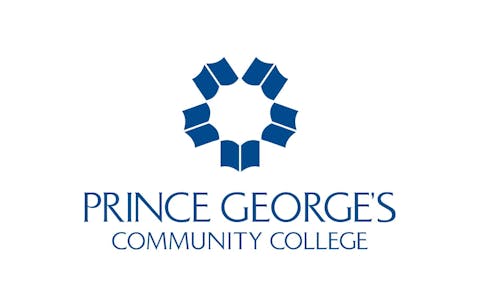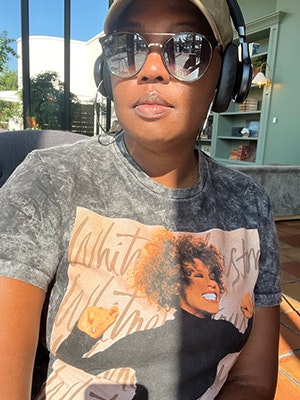Charles C. Moskos and John Sibley Butler’s pioneering study of
Black leadership development and racial integration in the United
States Army provides the reader with a glimpse into an institution
that, while not utopian, has achieved remarkable success in race
relations. That success was achieved because the U.S. Army developed
policies which supported a philosophy that believed an absolute
commitment to nondiscrimination and uncompromising standards of
performance are absolutely necessary for achieving its goals. Indeed,
the Army was able to relate nondiscrimination to goal attainment, which
may be the key to solving many of the racial problems in contemporary
American society.
The authors argue that: “The Army is not race-blind; it is
race-savvy.” An important element in their argument is that this
rigidly hierarchical institution, which must exist in a
liberal-democratic society with its emphasis on individualism rather
than team/organizational cooperation can offer a set of principles that
can be applied to the civilian sector.
The book begins with a provocative comparison between the two
authors. Professor Moskos noted how he benefitted from affirmative
actions in obtaining admission to Princeton University, while Professor
Butler was asked by his parent to integrate Louisiana State University
(LSU). Moskos is the first in his family to complete secondary school,
“while…Butler is the fourth generation of his family to receive a
college degree.”
The central premise of the book is that “race is the prime American
dilemma and has unique dynamics.” Evidence of the important role race
plays in America is reflected in the authors’ query, “Ask yourself: Who
is more likely to be considered white in our society, the offspring of
a mixed Anglo-Hispanic or European-Asian union, or the offspring of a
mixed White-Black marriage?”
Thus, the authors skillfully set the stage for a discussion of a
major source of tension in contemporary American society and proceed to
provide empirical evidence to support their contention that the Army
has promoted excellence across racial lines. They conclude this
remarkable study by suggesting twelve key lessons civilians can learn
from the Army’s experience. Indeed, they suggest that while
“differences between military and civilian settings preclude exact
analogies, we can articulate the key principles of the Army’s
experience.”
The authors also offered this caveat: “In noting and celebrating
the success of good race relations in the Army, we are not blind to
real and serious problems that persist. The Army is not a racial
utopia. Black and white soldiers are susceptible to the same kinds of
interracial suspicion and resentments that exist in civilian society.
Although the Army stands in sharp and favorable contrast to nonmilitary
institutions, it is not immune to the demons that haunt race relations
in America.”
In their analysis of the arguments against using the Army as a
model for race relations throughout the society, the authors cite three
major criticisms advanced by opponents:
First, the Army commands methods of surveillance and coercion
unavailable to civilian institutions. Moskos and Butler acknowledge the
difference, however, they argue that while the Army is not a democracy,
neither are most other organizations. They cite the negative racial
situation in that most authoritarian and coercive of institutions —
the prison.
Second, economic security in the Army as well as decent housing and
medical benefits exist on a level which does not exist in civilian
society. The authors suggest that in the 1970s the real earnings and
benefits were practically identical to what they are today and yet the
Army was torn by racial strife. In addition, the authors ask why are
race relations generally better today in the Army than in the other
branches of the military with identical systems of authority and
compensation?
Finally, soldiers come from a segment of society that excludes the
very bottom rungs. Thus, they do not bring the most severe social
problems into the Army. The authors argue that while the Army does not
recruit from the very bottom rungs of American society, it does not
recruit from America’s elite youth either. They point out that colleges
and universities presumably recruit the highest-quality youths in
America, yet race relations are worse than in the Army.
The key question posed by the authors is: “How, then, do we
transfer the Army’s success to nonmilitary settings?” They offer the
following twelve lessons:
1. Blacks and whites will not view opportunities and race relations the same;
2. Focus on Black opportunity, not prohibiting racist expression;
3. Be ruthless against discrimination;
4. Create conditions so that white and Black youth can serve on an
equal basis to improve their social and civic opportunities;
5. Install qualified Black leaders as soon as possible;
6. Affirmation action must be linked to standards and pools of qualified candidates;
7. Affirmative action must follow a “supply-side” model, not a “demand-side” model;
8. A level playing field is not always enough;
9. Affirmative action should be focused on African Americans;
10. Recognize Afro-Anglo culture as the core American culture;
11. Enhancing Black participation is good for organizational effectiveness; and
12. If we do not overcome race, American society may unravel.
Of the twelve lessons, the last four have major long-term
implications for race relations, economic competition and national
security.
Lesson Nine suggests that, “The basic social dichotomy in our
society is Black versus white and, increasingly, Black versus
non-Black. To many Black citizens, racism is a given in American
society. However, when non-Blacks come to this country, ostensibly to
escape oppression, and engage in discrimination, one wonders what was
the real motivation.”
The authors see the shift to an emphasis on multiculturalism and
African-centered educational programs as distraction for the goals of
equality: “Multiculturalism ultimately trivializes the distinct history
and predicament of Black Americans.” Indeed, they make the important
point that “The Afro-American story is singular and of such magnitude
that it cannot be compared to the experiences of other American groups,
especially immigrant groups. American Blacks resemble neither the
immigrants of yesterday nor the ones of today.” The authors suggest
that “race overrides class as a source of in grained prejudice in our
country.”
Lesson Ten’s argument that America’s core culture is Afro-Anglo,
will be difficult for many Black, white, and Hispanic Americans to
accept. Many Hispanics would argue the opposite, given that they will
constitute the largest minority in the twenty-first century. There is
little doubt that our culture has been enhanced by African American
contributions, yet the historical misrepresentation of the role of
African Americans in the development of America is still a problem.
Lesson Eleven should be faxed, em ailed or sent directly to the
President/CEO of Texaco and to other major board rooms of American
corporations. The misperception that “the greater the Black proportion
in an organization, the poorer its effectiveness,” does a disservice to
major corporations that will have to compete in an international
economic environment that will be dominated by people of color. The
Army has been successful because it developed policies that related
nondiscrimination to organizational goal attainment, unit efficiency
and promotional opportunities. Major American corporations must adopt
the same approach or they will be less effective and will endanger
their ability to compete in the international markets.
Lesson Twelve’s long-term implications can directly affect the
national security of this nation. Around the globe, failed states are
occurring because of racial, ethnic and religious conflicts. Witness
the events taking place in Rwanda, Bosnia and many of the states of the
former Soviet Union. As the authors argue, “A society no longer united
by foreign threats may discover that its own internal racial divisions
are deeper and more intractable than anyone realized.” The
Balkanization of the United States is not what we should be seeking.
Moskos and Butler present an excellent view of how the army dealt
with social changes and the many lessons that can be transferred to the
civilian sector. This study will be a major contribution to the
discipline and of value to corporate America. Academics will find that
All That We Can Be: Black Leadership and Racial Integration the Army
Way is an excellent text for use in a civil-military relations course
in colleges, universities, military academies and war colleges.
Dr. Willie Curtis is a professor in the Department of Political Science, United States Naval Academy, Annapolis, Maryland.
COPYRIGHT 1997 Cox, Matthews & Associates
© Copyright 2005 by DiverseEducation.com





















